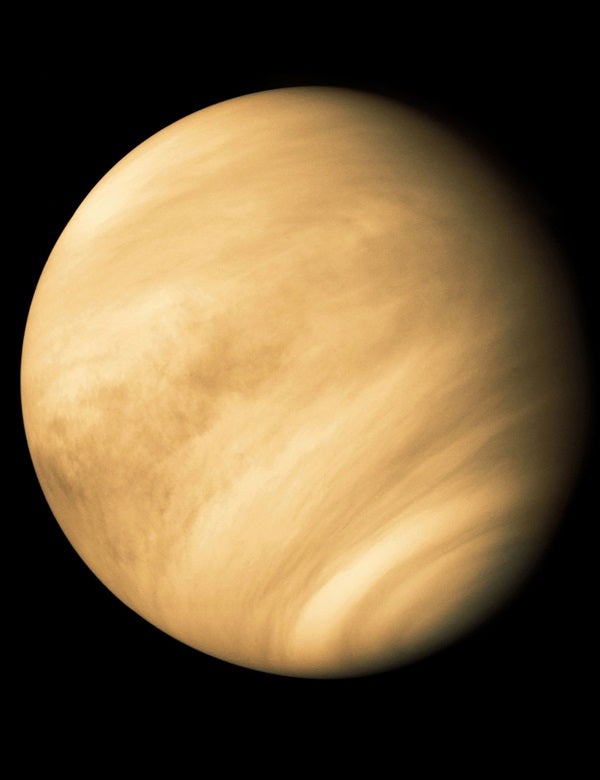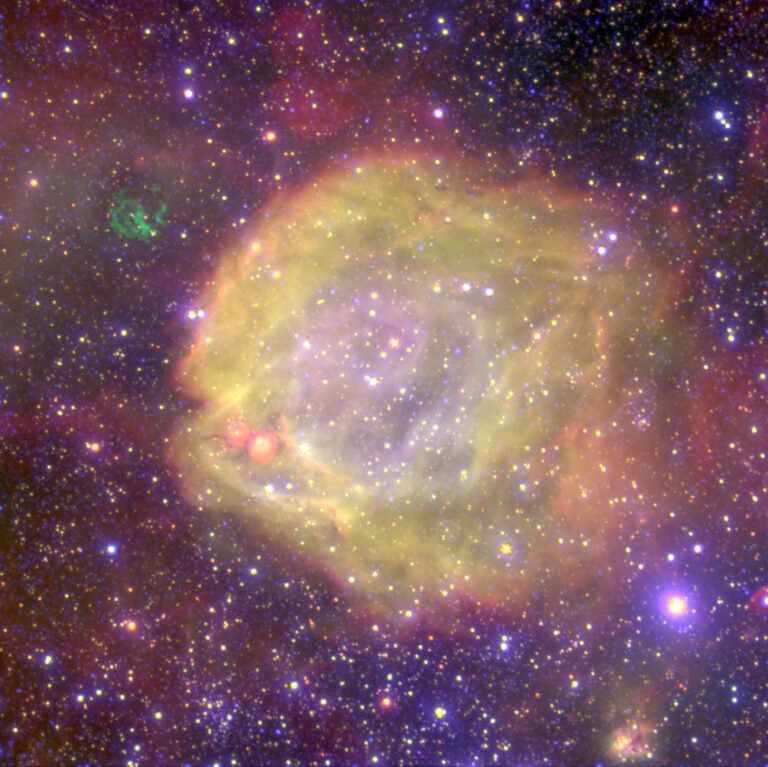It appears unlikely that resurfacing, if it occurred, led to the slow rotation rate of Venus, but it certainly may have caused some changes to the speed. Plate tectonics can affect the rotation rate through redistribution of mass. As the surface expanded or contracted (due to the buildup of heat and subsequent cooling through the release of heat from volcanism), it could have led to changes in the angular momentum and, hence, rotation rate.
Multiple impacts may have contributed to Venus’ unusual angular momentum compared to other planets in the solar system. Such impacts eventually could have forced Venus to spin in the direction opposite its rotation and also given it a different spin rate. Tides resulting from the Sun — both thermal (in Venus’ deep atmosphere) and gravitational (in the planet’s solid body) — now control Venus’ rotation rate.
There’s a possibility that atmospheric drag slowed the planet and switched its rotation direction, but the atmosphere would have had to rotate in the same direction in the planet’s past. Scientists know little about the evolution of Venus’ atmospheric circulation, so we cannot prove that the drag led to the planet’s slow rotation rate. — Sanjay S. Limaye, University of Wisconsin-Madison










